Costa Rican black honey hand data brewing method how to drink Costa Rican black honey coffee
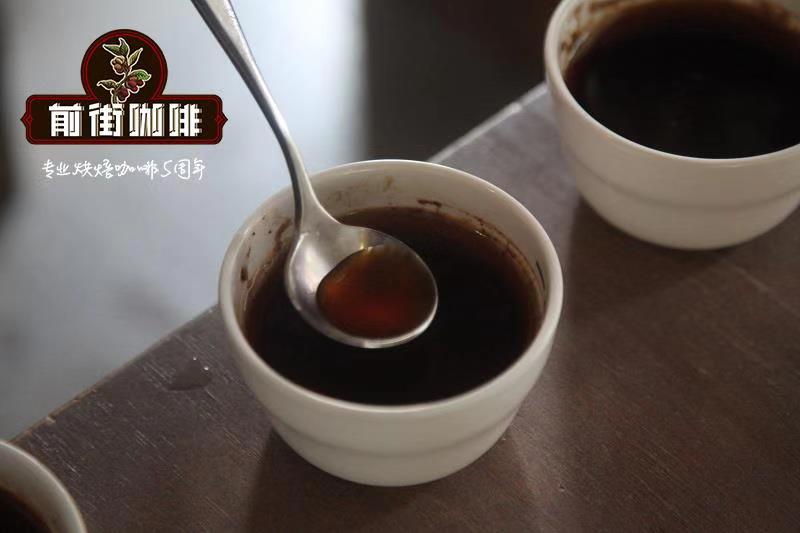
For professional baristas, please follow the coffee workshop (Wechat official account cafe_style)
Black honey treatment is the highest level of Costa Rican honey treatment, Qianjie believes that it is one of the best flavor and taste. Black honey treatment retains all the pectin of coffee beans for fermentation, during which strict manual supervision is needed to ensure the success or failure of the fermentation period. In the case of Black Honey, a boulder manor in the former street, this bean has been sold in Qianjie for a long time. This coffee treated with black honey has a faint aroma of fermented wine, wine-like acidity, jackfruit-like tropical fruit flavor and honey sweetness. it is a coffee with a very diverse flavor and an unusual taste.
Stonehenge Manor, Costa Rica
Country: Costa Rica
Manor: Stonehenge Manor
Grade: SHB
Treatment method: black honey treatment
Altitude: 1700-1800m
Variety: Kaddura, Kaduai
Costa Rica, located in the Central American isthmus, is controlled by Pacific and Atlantic currents and sea breezes at the same time, and there are many towering volcanoes up to 2000 meters above sea level. Coffee berries are able to grow slowly in the fertile volcanic ash soil and cool environment at high altitude, giving birth to coffee beans with complete and rich flavor. Costa Rica can be divided into two seasons a year. The dry season is from December to April, the coffee harvest is from December to April, and the wet (rainy) season is from May to November. In recent years, micro-treatment plants have been established, and since the water consumption is only 5% of that of traditional washing plants, and does not require huge sinks and exposure fields, the investment required is relatively small. The "honey-treated coffee" with low acidity, high complexity and strong sweet flavor has become the target of competition in the coffee industry in recent years. Coffee was grown in Costa Rica two hundred years ago, first on the slopes of the Poas and Barva volcanoes, now known as the Central Valley. At present, Costa Rica has eight main producing areas: West Valley in the western valley, Central Valley in the central valley, Tarrazu in Tarazu, Tres Rios in Sanhe, Orosi in Europe, Brunca in Brenka, Duli Alba Turrialba and Guanacaste in Guanacaster.
/ Manor introduction
Stonehenge Manor is located in the Brunca producing area of southern Costa Rica, because the topography and mountains connect to Panama, with a diverse micro-climate, the manor unearthed aboriginal stone carvings from 200 to 1500 BC, called the Secret Stone Ball, so the manor is named after the boulder.
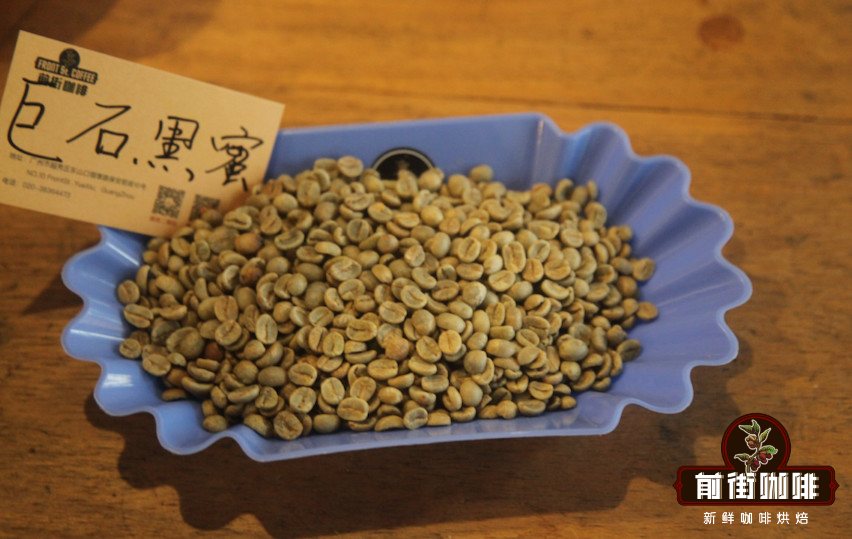
Analysis of raw beans of Qianjie coffee
| Kaddura Caturra, Kaduai Catuai Kaddura and Kaduai are relatively common varieties in American beans, especially in Central America.
Kaddura: Kaddura is a variety of bourbon, was discovered in Brazil in 1937, production capacity and disease resistance are better than bourbon, and the tree is shorter, easy to harvest, adaptable, no shade trees, direct exposure can also be vibrant in the sun, commonly known as exposed coffee (Sun Coffee). Kaddura is suitable for planting in the high altitude area from 700m to 1700 m, with strong adaptability to altitude, but the higher the altitude, the better the flavor, and the production capacity is relatively reduced, which is the fate of fine beans.
Kaduai: Kaduai is also an Arabica hybrid breed, which is a hybrid of Mundo Novo Mondonowood (New World) and Caturra Kaddura. It has a good ability to resist natural disasters, especially wind and rain. It inherits the advantages of Kaddura's low stature and changes Mondonowood's shortcomings; another advantage is that it is solid and not easy to fall off in case of strong wind, which makes up for the weakness of Arabica fruit.
/ treatment method
Honey treatment, called Honey Process or Miel Process, after hearing the name honey treatment, many people will think that this is a process of processing with honey, or processed coffee will have a honey flavor, in fact, honey treatment is the method of peeling off the pulp and drying the fruit with endocarp. Because in the process of drying, the water of the gel on the surface of the core will evaporate, so it becomes as sticky as honey, hence the name.
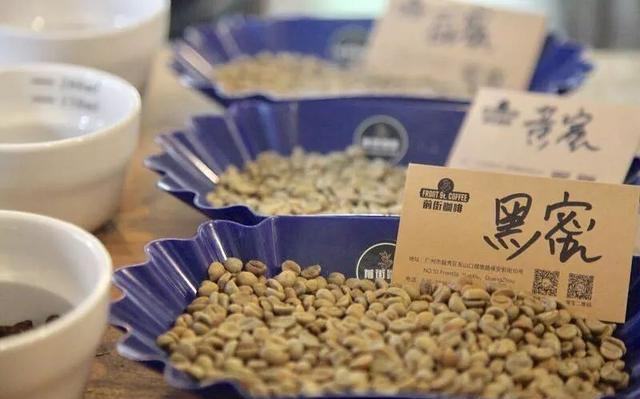
Yellow honey: about 40% of the pectin is removed; the drying method requires the most direct heat absorption, receives the most light drying, and lasts for about 8 days to reach a stable water content.
Red honey: about 25% of the pectin is removed; it takes longer to dry than yellow honey, and reduces direct exposure to sunlight, even in shading sheds, lasting about 12 days.
Black honey: hardly remove pectin; dry for the longest time, lasting at least 2 weeks, with a cover to avoid too strong sunlight, prevent drying too fast, and make sugar conversion more fully.
| | Qianjie Coffee roasting Analysis Roaster Yangjia 800N (roasting capacity 500 grams) |
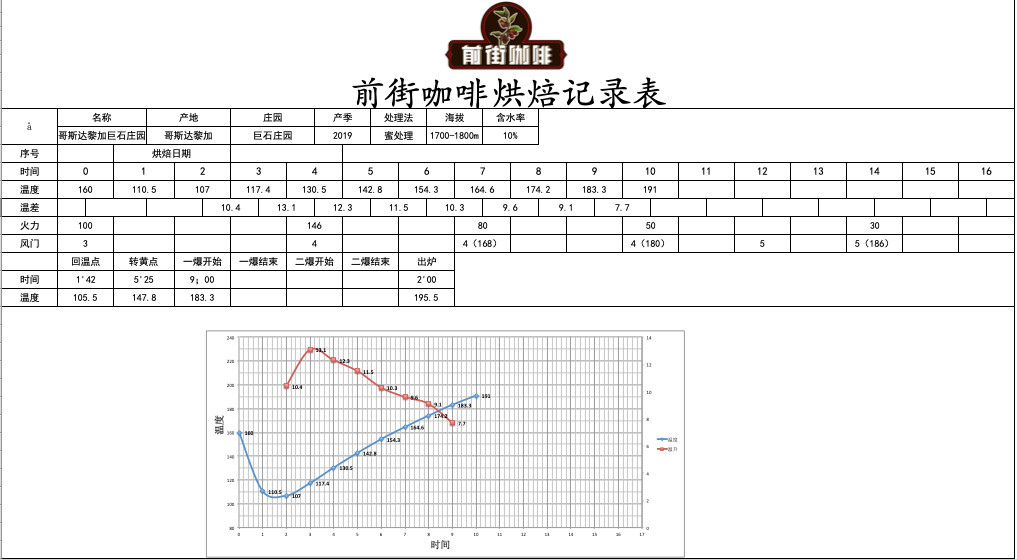
This bean belongs to SHB extremely hard beans, hard beans, medium moisture content, yellowing point in 5 minutes 25 seconds, 9 minutes into an explosion, an explosion after 2 minutes after the development of baking. The furnace temperature is 160℃ and the firepower is 100. the throttle is open to 4 at 146℃, and the firepower is unchanged. When the furnace temperature is 153.6 ℃, the bean meter turns yellow, the grass smell disappears completely, and enters the dehydration stage. When the furnace temperature reaches 168℃, the firepower is adjusted to 80 ℃ and the throttle is 4. The smell of toast obviously changes to the smell of coffee, which can be defined as a prelude to an explosion. At this time, it is necessary to listen carefully to the sound of the explosion point. When the sound of the explosion point begins to explode, the throttle will remain unchanged. After an explosion, the development will take 2 minutes and 195.5 ℃ will be put into the pot.
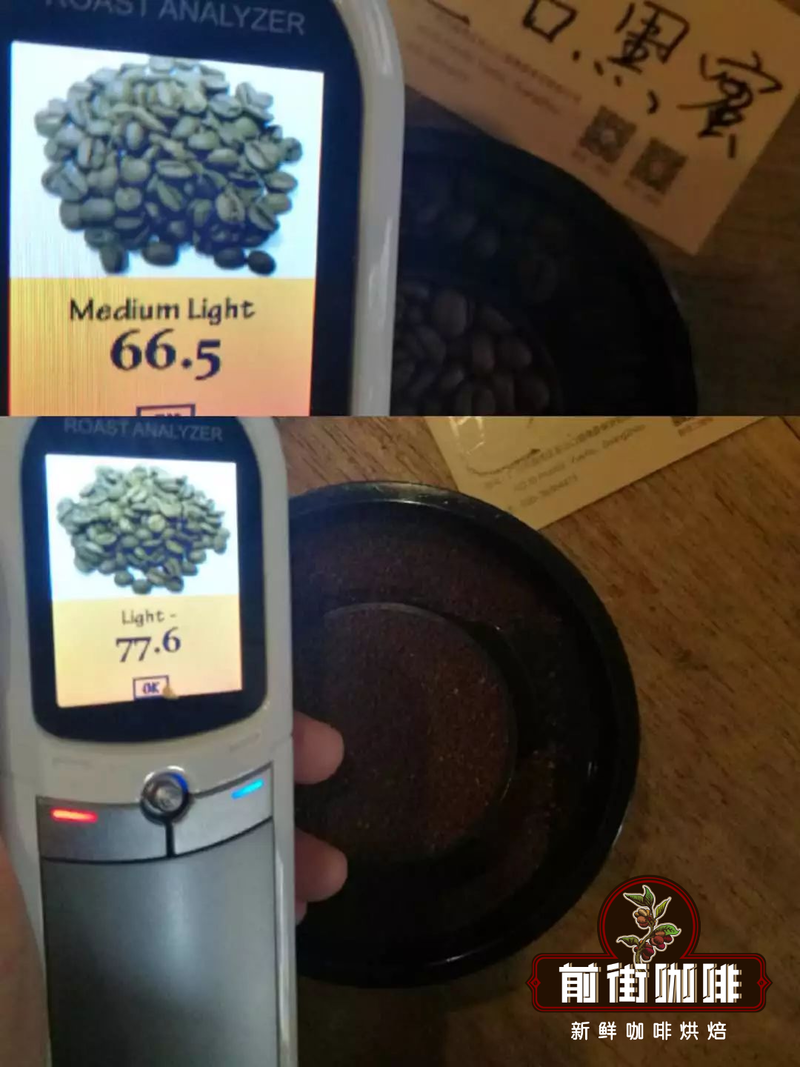
Agtron bean color value 66.5 (above), Agtron pink value 77.6 (bottom), Roast Delta 11.1 value.
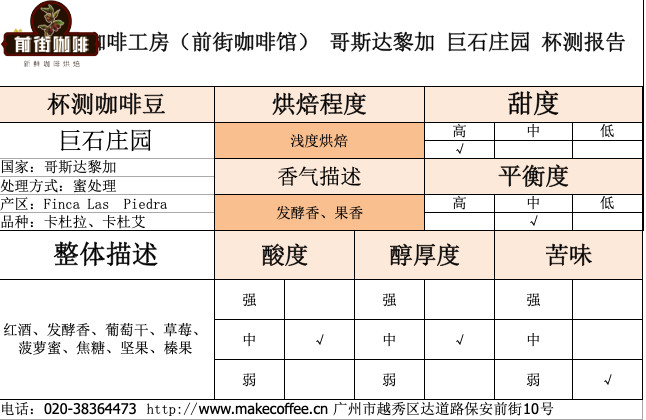
Cup test flavor: fermented aroma, fruity, red wine, raisins, strawberries, jackfruit, nuts, hazelnuts, caramel.
Qianjie Coffee hand-made suggestion

Recommended cooking method: hand filter cup: V60 water temperature: 90-92 ℃ powder / water ratio: 1:15 Grinding degree: BG 5R (China Standard 20 sieve pass rate 58%), that is, medium and fine grinding
Flushing and cooking technique: segmented extraction. Steam with 30 grams of water for 30 seconds, small flow circle injection to 124 grams, continue to inject water to 227 grams when the water level is about to be exposed to the powder bed, remove the filter cup when the water level is about to expose the powder bed, and the extraction time is two minutes. When cooked in a V60 filter cup, it smells obvious fermented aroma and ripe strawberry aromas. it tastes smooth and mellow, with a strong sense of juice, with strawberries, nuts, cream, red wine and raisins, with a wine finish.
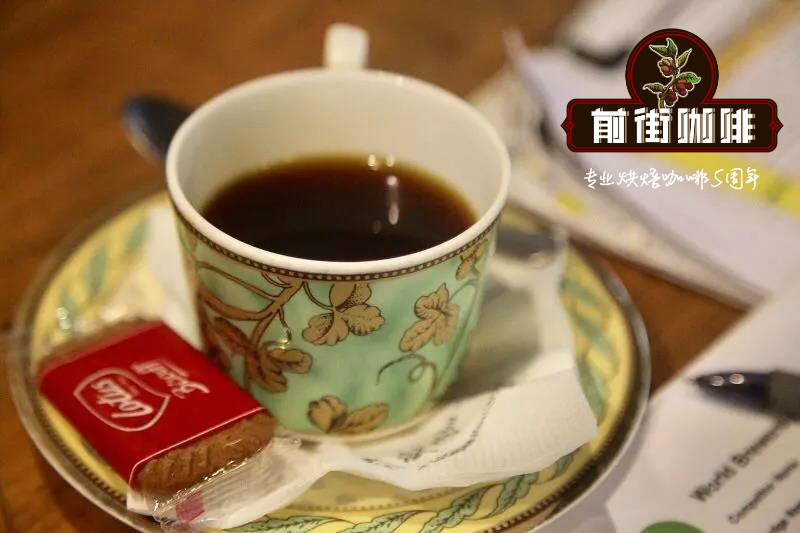
Important Notice :
前街咖啡 FrontStreet Coffee has moved to new addredd:
FrontStreet Coffee Address: 315,Donghua East Road,GuangZhou
Tel:020 38364473
- Prev

How much is Costa Rican yellow honey? Costa Rica yellow honey coffee price
Professional barista communication please follow the coffee workshop (Wechat official account cafe_style) Costa Rican coffee has always been considered to be the perfect type of classic flavor, balanced, clean, mild is his tone, this batch of western valley Yelzaro processing plant, famous for its excellent natural geographical conditions and excellent regional planting management technology, almost perfect classic flavor, in the acidity
- Next

Costa Rican black honey taste and flavor characteristics of Costa Rican black honey coffee
For the exchange of professional baristas, please follow the Coffee Workshop (official Wechat account cafe_style) country: Costa Rica Grade: SHB producing area: Tara Pearl roasting degree: medium Baking method: black Honey treated Variety: Kaduai Manor: Farami Manor Flavor: preserved Plum, Honey, Brown Sugar Kaduai is a coffee variety that is an artificial hybrid of Kaddura and Mondu Novo. Kadu
Related
- Detailed explanation of Jadeite planting Land in Panamanian Jadeite Manor introduction to the grading system of Jadeite competitive bidding, Red bid, Green bid and Rose Summer
- Story of Coffee planting in Brenka region of Costa Rica Stonehenge Manor anaerobic heavy honey treatment of flavor mouth
- What's on the barrel of Blue Mountain Coffee beans?
- Can American coffee also pull flowers? How to use hot American style to pull out a good-looking pattern?
- Can you make a cold extract with coffee beans? What is the right proportion for cold-extracted coffee formula?
- Indonesian PWN Gold Mandrine Coffee Origin Features Flavor How to Chong? Mandolin coffee is American.
- A brief introduction to the flavor characteristics of Brazilian yellow bourbon coffee beans
- What is the effect of different water quality on the flavor of cold-extracted coffee? What kind of water is best for brewing coffee?
- Why do you think of Rose Summer whenever you mention Panamanian coffee?
- Introduction to the characteristics of authentic blue mountain coffee bean producing areas? What is the CIB Coffee Authority in Jamaica?

